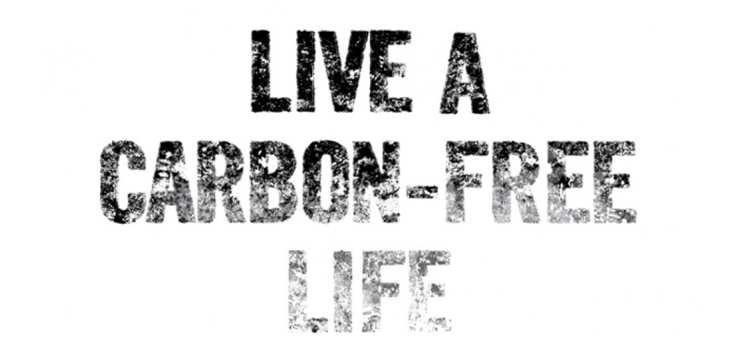Is it too late to reverse global warming? Probably. But even if solar flares and mega tsunamis threaten life on earth, you should still be separating your recyclables.
PUBLISHED : Thursday, 04 June, 2015 (HK Magazine)
Illustration: Pierre Pang
Zero-carbon: The Holy Grail in the quest to save our planet from climate change. It may not come as a surprise, but Hong Kong has a ways to go on the path to zero carbon. The current state of the city’s annual carbon emission levels are at about 5.2 tons per person, according to the World Bank’s 2010 report. In 2011, Hong Kong’s Environmental Protection Department’s evaluation saw an increase to 6 tons. Just for comparison: Singapore clocks in at 2.7 per head.
When measuring emissions, the Hong Kong government doesn’t take into account several factors, such as production or transit, meaning the official numbers may be vastly underestimated. Private carbon auditor Catherine Touzard suggests that the reality may be a few tons more per person. “Hong Kong’s footprint is mainly energy production and consumption, but there are a lot of embodied emissions [from every step of the production process] in the products we use,” she says. Offsetting carbon footprints—aka the greenhouse gas emissions dispelled into the atmosphere by organizations, events or people—is one way to slow the process. But how can you personally reduce your carbon footprint?
World Environment Day
Coinciding with World Environment Day, the Green Council has organized “Green Day” on June 5. Supporters are encouraged to wear green, and activities include discounts at organic or vegetarian restaurants citywide.
1. Recycle Your Trash
According to the Environmental Protection Department, Hongkongers dispose of an average of 9,000 tons of municipal solid waste per day. That’s the equivalent of 750 double decker buses being carted off to landfills, where capacity is limited. Hong Kong’s three landfills are expected to fill up as early as 2016. Emissions from our waste also contribute to at least 5.3 percent of the city’s carbon footprint.
The government says it has a plan, which started with plastic bag levies and will eventually include a system that charges citizens for waste disposal by weight, according to District Councilor and Designing Hong Kong CEO Paul Zimmerman. To address overflowing landfills, the government plans to build several more incinerators to deal with sludge and sewage, as well as burn household waste before sending the remnants for burial.
But there are many flaws with the plan. “The problem with the burners is that they’re put on one island, the landfills are in other locations, and the facilities for separation are elsewhere, so it’s all over the place,” explains Zimmerman. “From a waste logistics point of view, it doesn’t make any sense.”
The government’s added infrastructure and levies aside, waste management should really start at home. “People should make it easy for the cleaners and the old ladies to pick recyclable materials out of your waste,” says Zimmerman. “In your kitchen, separate your waste into what is likely to be recyclable—make sure it’s washed and clean, and put it in a box. The cleaner it is, the easier it is for people to separate.”
The hardest thing to recycle? Glass. And it shows in the numbers: the recycling rate of glass bottles in Hong Kong remains just under 10 percent. Luckily, Green Glass Green, an NGO headed by April Lai, is one of the major independent groups working to recycle glass — bringing a team to collect bottles from F&B outlets in SoHo and surrounding areas. It currently has nine stations throughout Hong Kong, including Wan Chai’s Luard Road Refuse Collection Point (Corner of Luard and Johnston roads). In 2014 alone, GGG recycled just over 1,000 tons of glass bottles. Everything collected is sent to Tiostone, a company that recycles the glass into eco-bricks that are used primarily for government-funded projects.
Greenhouse Gases
Need a high school science recap? Accumulated greenhouse gases—carbon dioxide, methane, nitrous oxide and ozone—block the sun’s radiation from escaping the atmosphere, which in turn heats up the planet. And not in a sexy, smoldering kinda way.
Do Your Part
Recycle Everything
HK Recycles collects your recyclables for a subscription starting from $39 a week. Materials collected—which can be all types of metal, uncontaminated plastic and paper, plus all kinds of glass—go to upcyclers who turn all that trash into something reusable.
Donate Old Furniture
Don’t let that old dresser go to the landfill! Green Dot Home collects used furniture in reasonable condition directly from your home, or you can deliver it yourself to its warehouse in Kowloon Bay.
Plant Some Trees
Join Lantau reforestation group Ark Eden’s tree-planting day in tandem with World Environment Day on June 6, or its next big community tree plant.
Don’t Waste Leftovers
Planning a get-together or a big banquet dinner and anticipating huge amounts of leftovers? Donate them to charity: Friends of the Earth will put you in touch with the right people.
Donate Your Electronics
The St James’ Settlement organizes a Waste Electrical and Electronic Equipment (WEEE) recycling program that collects most major household electronics. Repairable appliances are fixed and either sold for charity or donated to the needy, while other parts will be dismantled and recycled.
Shop with a Conscience
Next time you go on a shopping spree—be it for skincare and cosmetics or furniture and home supplies—be sure to keep old Mother Nature in mind. Granted, it’s more expensive to shop with a conscience, but using only eco-friendly or sustainably produced products is one small step towards shrinking your carbon footprint.
“It’s hard enough as it is in Hong Kong because you have to import everything,” says Angela Wong of Little Things in Life, an online store selling organic and all-natural skincare and cosmetics. “We choose brands that use 100 percent post-consumer waste, or recyclable glass.”
When shopping, try to avoid more elaborately packaged items and opt for something simple and minimalistic. The lighter it is, the better for the environment: Not only does a light-weight package use fewer resources, but it also cuts down on fuel emissions during shipping.
Shop Recycled
An abbreviation for Eco Lifestyle, ECOLS carries worldwide brands sustainably created or made from recycled resources. ECOLS keeps it so fresh and so green, green
Shop Green
Pre-loved furniture doesn’t have to be all mug-circled coffee tables and frayed armchairs. Check out Go Green Shop, where all the donated furniture is in good condition.
Buy Bamboo
Bamboa makes top-notch homeware and textiles purely from locally grown bamboo. It’s not only sustainable: bamboo is the fastest growing plant on earth and it releases 30 percent more oxygen than trees. A portion of every purchase at Bamboa goes to environmental projects that help nurture biodiversity.
Redecorate Responsibly
Next time you freshen up the flat, use a non-toxic paint such as eico Paints, manufactured purely using geothermal or hydropower energy in Iceland or Sweden. It’s then transported to Hong Kong using unfilled spaces on existing shipping routes. It’s durable and long-lasting, which means less waste and repainting in the long run.
Eat Local
Around 90 percent of Hong Kong’s food supply is imported, predominantly from the mainland. Imported food racks up a huge carbon footprint before it even reaches your plate due to emissions spent in transit. But refrigeration and transport aren’t the only causes: high levels of carbon are also a result of production methods—think farming-induced deforestation, processing frozen foods, cultivating off-season crops and more.
So if you want to go green, you can start by becoming a locavore. “If you’re buying locally, you can go straight to the farmer. Local usually means it’s seasonal, easier to grow and nutritionally better for you because it’s not exposed to as many bacteria or toxins during transit,” says Sonalie Figueiras, co-founder of wellness guide Green Queen.
As cattle is one of the world’s major methane emitters, Touzard also recommends lowering your intake of meat. She says, “cattle are probably second on the list — about 18 percent of all world emissions — so try to use more vegetarian recipes.”
Grow Some Plants
Currently on a residence at non-profit arts space Spring Workshop., urban farmers at HK Farm can teach you about starting your own mini-farm on your rooftop. Take produce and seedlings home with you for free!
Green Grocer
Founded by Todd Darling, owner of F&B outlets Posto Pubblico, Linguini Fini and Stone Nullah Tavern, Homegrown Foods is an online grocer that supplies organic produce, groceries, eggs, and organic meat from Australia. It also provides fruit and vegetable box subscriptions delivered straight to your door. Get your weekly fix from Homegrown Foods
Morning Grocery Run
Need to cook dinner but stuck at work? Jou Sun will deliver market veggies and locally sourced groceries to your door in less than three hours. The outfit also carries fair trade soaps and delicious nut butters made by women at the St James’ Settlement.
Travel Responsibly
The second-largest contributor of carbon emissions, after electricity generation, is the city’s transport. And while up to 90 percent of trips are made on public transport, an increase in privately owned vehicles is a detrimental trend.
“Hong Kong used to have very few individual cars but this ratio has been rising without any constraints,” says Touzard. “Focusing on public transport is the only way to lower the carbon footprint.” And with more cars comes more traffic. And with more traffic? Greater carbon emissions and increased levels of toxic air. “The highways are not congested in Hong Kong. What’s congested is people queueing to get off the highways all over town,” explains Zimmerman. “All of that congestion has a public health impact.”
One solution is to make Hong Kong more pedestrian- and cyclist-friendly. Aside from being better for the environment, walking and cycling are also better for your body. “Cycling and walking as forms of transport are two sides of the same coin—they’re both individual mobility,” says Martin Turner of the Cyclist Association. A greener solution that means you can skip the gym? Count us in.
Use Public Transport
You heard the experts: get walking or take the MTR.
Be an Infrequent Flyer
As a form of transportation, airplanes emit a huge amount of greenhouse gases per passenger mile—plus they travel a greater number of miles in general, making them the biggest culprit in racking up a carbon footprint. If you have to fly, longer haul is more fuel efficient than short hops. Jonesing for a break? Indulge in a staycation.
Share Your Wheels
In space-starved Hong Kong, owning a car is both a financial and logistical burden. Enter Carshare, a website and app that allows you to rent cars when you want or lease out your own vehicle. This summer, try out a BYD electric car, available for $199 per day for members.
www.carshare.hk. App available on iPhone and Android.
Show you care, share your car
Buy Carbon Credits
If you can’t do any of the above, the last resort is to offset your carbon footprint by calculating your average emission output and buying credits that support regional NGO offset projects. Hong Kong-based Carbon Care Asia supports projects such as a wind farm in Ningxia and rehabilitating deforested land in Northwest Sichuan.
HK Cares
Instead of tossing this issue in the trash, you can use HK Mag to …
Pick up after your dog.
Craft a cunning lampshade.
Wrap a pretty present.
Sculpt an elaborate papier-mâché mantelpiece.
Fold an origami dragon.
Keep your seat dry at the races.
Shield your face from the sun.
Fashion a cool hat.
Make a paper plane.
Pen an epic love letter.
Wipe your arse!
EDITOR: HK Magazine ceased publication in 2016.

